#Persian civilization
Text
Ancient Iranian sword unearthed in Russia
Archaeological news of great significance:An ornate Iranian sword has recently been recovered during an excavation survey in the Black Sea Region,in the present-day Krasnodar Krai of Russia. Tehrantimes.com give us the whole image in details.https://www.tehrantimes.com/news/477732/Ancient-Iranian-sword-unearthed-in-Russia
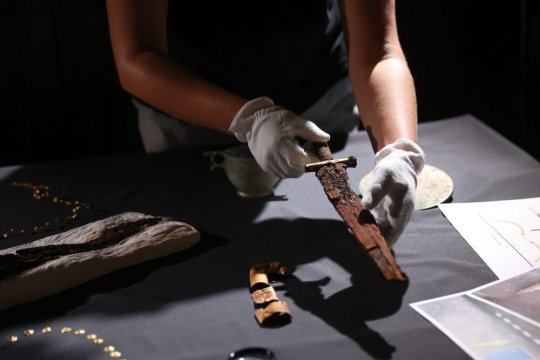
Dating back to the 4th to the 6th century CE, the sword, along with several relics, have been unearthed from a warrior burial, who was an inhabitant of the Taman Peninsula, Heritage Daily reported on Saturday.
The sword suggests a political and cultural connection with the Sassanian or Neo-Persian Empire from modern Iran and Iraq, likely given as a diplomatic gift or taken as a military trophy, the report added.
Also, the archaeological project yielded pieces of a harness, buckles, and belt tips, as well as high-status items such as glass jugs, wooden and metal utensils, and wooden boxes with decayed cloths.
There is no doubt that the cited warrior was a representative of the elite of Phanagoria and was a bearer of the military aristocratic culture of the Bosporan Kingdom in the Migration Period, said one of the members of the project.
The ancient city of Phanagoria was a Greek colony, first founded in the Taman peninsula by Teian colonists in the 6th century BC after a conflict with the Persian king Cyrus the Great. The city grew into a major trading center that, along with the associated necropolis, covers an area of over 2223 acres.
Image below:King Cyrus the Great. Source:https://heritage-history.com/index.php?c=resources&s=char-dir&f=cyrus1
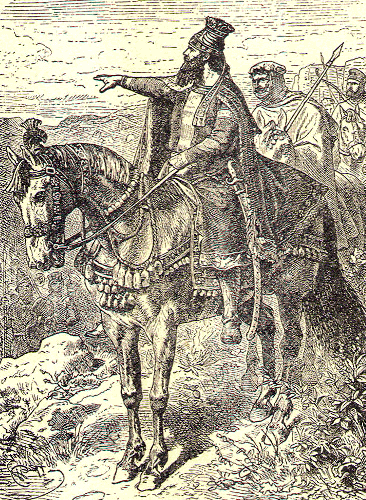
In many ways, Iran under Sassanian rule witnessed tremendous achievements of Persian civilization. Experts say that the art and architecture of the nation experienced a general renaissance during Sassanid rule.
In that era, crafts such as metalwork and gem engraving grew highly sophisticated, as scholarship was encouraged by the state; many works from both the East and West were translated into Pahlavi, the official language of the Sassanians.
The legendary wealth of the Sassanian court is fully confirmed by the existence of more than one hundred examples of bowls or plates of precious metal known at present. One of the finest examples is the silver plate with partial gilding in the Metropolitan Museum of Art in New York. The dynasty was destroyed by Arab invaders during a span from 637 to 651.
#ancient Persia#ancient Iranian sword#Krasnodar Krai#Phanagoria#king Cyrus the Great#Sassanian empire#Persian civilization#Russia#ancient Greece#Black Sea#ancient Greek colonies#culture#cultural exchanges#diplomatic gifts#ancient military trophy#heritage-history#arab conquest#Cyrus the Great
10 notes
·
View notes
Text
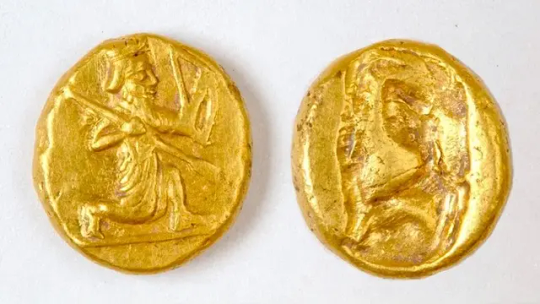
A Pot With Gold Coins Discovered in Ancient Greek City in Turkey
Archaeologists have discovered a pot of buried treasure overflowing with ancient Greek coins in Turkey.
The gold coins were found inside a room beneath a home in Notion, an ancient Greek city in western Turkey. They feature the figure of a kneeling archer, a design element used for the Persian daric, a gold coin issued by the Persian Empire. The currency was likely minted in Sardis, located 60 miles (97 kilometers) northeast of Notion, according to a statement from the University of Michigan.
Researchers think the mercenaries used the hoard as payment, but it's unclear why they buried it.
"The discovery of such a valuable find in a controlled archaeological excavation is very rare," Christopher Ratté, a professor of ancient Mediterranean art and archaeology at the University of Michigan and director of the Notion Archaeological Survey, the project that led to the discovery the coins, said in the statement. "No one ever buries a hoard of coins, especially precious metal coins, without intending to retrieve it. So only the gravest misfortune can explain the preservation of such a treasure."
A few stylistic clues indicate that the coins were struck sometime during the fifth century B.C. — a time stamp archaeologists are using to help uncover the sequence of events that led to the treasure's burial.

"This hoard will provide a firm date that can serve as an anchor to help fix the chronology of the (entire sequence of coins)," Ratté said. "According to the Greek historian Xenophon, a single daric was equivalent to a soldier's pay for one month."
In the past few years, the site has been a hotbed for artifact finds, including pottery fragments, also from the fifth century B.C., hidden "in earlier walls incorporated into the foundations of the house," which dates to the Hellenistic period, according to the statement.
The Hellenistic period occurred after the death of Alexander the Great in 323 B.C. and lasted until the conquest of the final Hellenistic kingdom by Rome in 31 B.C. During the sixth century B.C., Notion was incorporated into the Persian Empire along with other Greek cities. In the early fifth century B.C., it was freed from Persian rule for a time, only to be reintegrated into the empire during the fourth century B.C., according to the statement.
Between 430 and 427 B.C., a group of Persian sympathizers, as well as Greek and "barbarian" mercenaries, occupied Notion. During that time, the Athenian general Paches killed pro-Persian mercenaries, prompting Persian sympathizers to be expelled from the city as the Athenians took control, according to the statement.
Ratté said that these events could have led to the burial and eventual loss of the hoard.
By Jennifer Nalewicki.
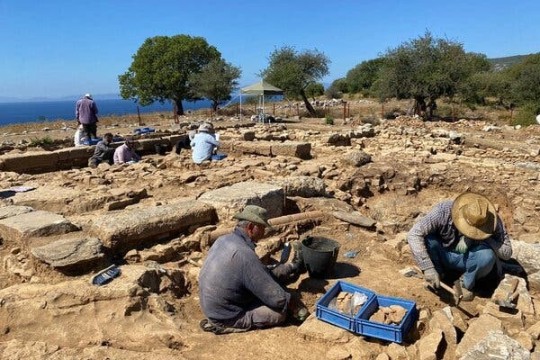
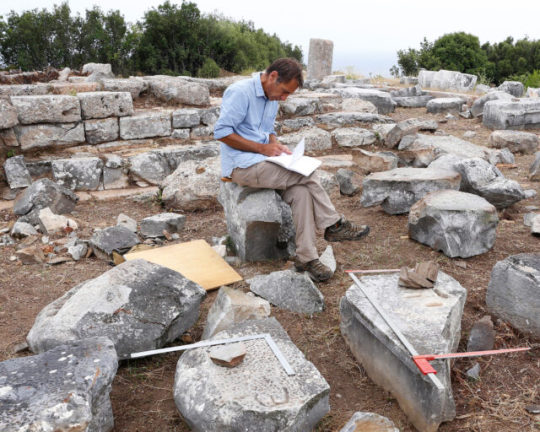
#A Pot With Gold Coins Discovered in Ancient Greek City in Turkey#Notion#gold#coins#collectable coins#ancient artifacts#archeology#archeolgst#history#history news#ancient history#ancient culture#ancient civilizations#persian empire#greek history
37 notes
·
View notes
Text
My roman empire is that people should make more big budgeted musicals about the ancient civilizations. We can have an Epic of Gilgamesh musical, the Trojan War, and any ancient story that was passed down through song for generations.
I wanna hear our ancestors come alive again and hear the beautiful words and stories that they’ve so passionately sang and written about-for us not to forget about them.
#roman empire#epic of gilgamesh#trojan war#achilles#ancient history#ancient civilizations#greek poems#middle eastern poems#persian poems#musicals#epic the musical#literature
82 notes
·
View notes
Text
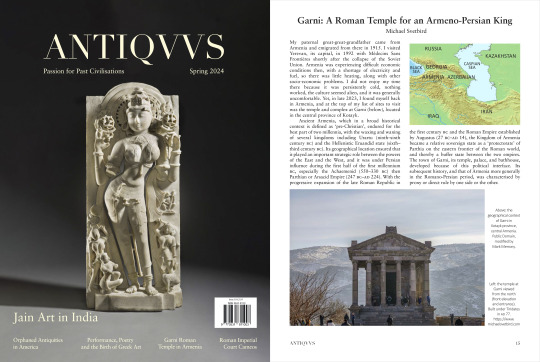
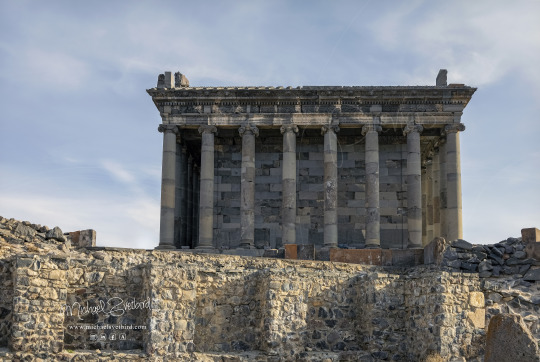
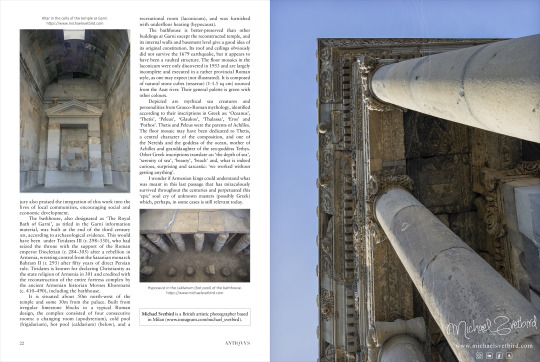

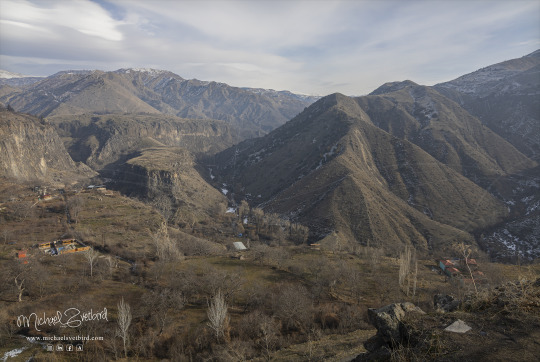

ANTIQVVS Magazine Spring 2024 Issue is out now with my:
"GARNI: A Roman Temple for an Armeno-Persian King" Illustrated Article [Page 15]
Web: https://www.antiqvvs-magazine.com
IG : @ antiqvvsmagazine | instagram.com/antiqvvsmagazine
FB : facebook.com/antiqvvsmagazinvs
X : @ Antiqmag | x.com/Antiqmag
Please consider subscribing:
https://www.antiqvvs-magazine.com/subscribe-world
#antiqvvs#antiqvvs magazine#spring issue#ancient civilizations#magazine#publication#article#ancient#garni#armenia#roman#temple#parthia#parthian#persian#ancient rome#ancient history#archaeology#antiquity#culture#heritage#museology#museum#art history#antiquities#architecture#art photography#illustration#archaeology photography#michaelsvetbird
12 notes
·
View notes
Text
Ancient Architectural Capitals

This image presents a variety of ancient architectural capitals, highlighting different styles and regions from ancient civilizations.
Capitals are the uppermost parts of columns, providing both decorative and functional elements in classical architecture.
The following styles are illustrated:
Egyptian Papyrus Capital
– A design inspired by the papyrus plant, common in ancient Egyptian architecture, symbolizing the Nile's vegetation.
Egyptian Date-Palm Capital
– This capital features palm leaves, a motif representing fertility and abundance in ancient Egypt.
Persian Animal Capital
– Notable for its intricate carvings of animals, this style reflects the opulence and symbolic artistry of ancient Persia.
Greek Doric Capital
– A simple, sturdy design characterized by its plain, rounded shape, representing the earliest and most austere form of Greek architecture.
Greek Ionic Capital
– Famous for its scroll-like volutes, this elegant style is more ornate than Doric, used in many temples and buildings in ancient Greece.
Greek Corinthian Capital
– Highly decorative, featuring acanthus leaves, this capital became prominent in later Greek and Roman architecture for its intricate beauty.
Roman Corinthian Capital
– Derived from the Greek Corinthian style, the Roman version is more detailed and elaborate, reflecting the grandeur of the Roman Empire.
Indian Foliage Capital (150 B.C.)
– Marked by lush, detailed carvings of plant forms, this style illustrates the naturalistic artistry prominent in ancient Indian architecture.
Indian Plain Capital (400 A.D.)
– A more restrained, straightforward design, this capital highlights the evolution of Indian architecture towards simplicity during later periods.
These capitals showcase the diversity and evolution of ancient architecture across cultures, blending aesthetics with symbolism and structural support.
#ancient architectural capitals#capitals#columns#ancient civilizations#Egyptian Papyrus Capital#Egyptian Date-Palm Capital#Persian Animal Capital#Greek Doric Capital#Greek Ionic Capital#Greek Corinthian Capital#Roman Corinthian Capital#Indian Foliage Capital#Indian Plain Capital#ancient architecture#aesthetics#symbolism
3 notes
·
View notes
Text
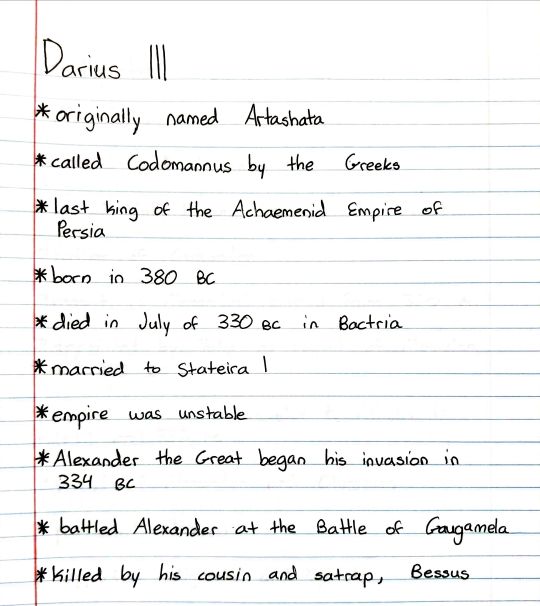
Patreon
#studyblr#notes#history#historyblr#world history#western civ#western civilization#greek history#alexander the great#codomannus#darius III#artashata#persia#persian history#battle of gaugamela#bessus#darius of persia#bactria#ancient history#ancient greece#ancient persia
2 notes
·
View notes
Text
Weavers, Scribes, and Kings Book Review
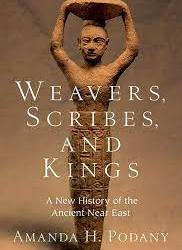
I just finished reading Weavers, Scribes, and Kings by Amanda H. Podany, and I would like to share my thoughts with you.
What is this book about? Simply put, this book is about the history of the Mesopotamia area that covers the time of the Uruk period (3500 BCE) all the way to the death of Alexander the Great (323 BCE). The author covers all the great civilizations that rose and fell during this period, such as the Sumerians and the Akkadians and the Assyrians and the Babylonians and the Persians. She also looks at the lives of various people who lived during this time, such as scribes and priestesses and textile workers and traders and slaves and kings.
What do I like about this book? I like the writing style, for the words flow seamlessly and effortlessly. I also like how she tells the history of Mesopotamia in a chronological and coherent order that's easy to follow. She also manages to tell this history in an engaging and entertaining manner. Also, the breath of knowledge she covers in this book is mind boggling! I can't even begin to imagine how many hours of research she must have spent in order to create this phenomenal masterpiece.
What do I dislike about this book? There's really nothing I dislike about this book. If I had to nitpick, I would say that the pictures could have been of a higher resolution. Some of them were hard to see.
What do I rate this book? I rate this book a solid five out of five stars.
Would I recommend this book? Yes.
Why would I recommend this book? I would recommend this book because it provides a comprehensive and in depth history of the ancient Mediterranean world.
To whom would I recommend this book? I would recommend this book to anyone interested in Bronze Age Civilizations and how people lived in the past.
Well, that's all I have for today. Until next time, take care and stay curious.
#mesopotamia#history#ancient civilizations#ancient history#akkadian#sumerian#babylonian#assyrian#persian#book review
2 notes
·
View notes
Text
me when i take the misogynist civilization class: man why is there misogyny in here
#the misogynist civilization is ancient rome btw#and like i hate those historically incorrect girlboss retellings but i might get it a little bit... its a coping mechanism#<< dont slaughter me for that please#shout out 2 my teacher for mentioning the persian empire absolutely slaughtering some Greek king though that rly cheered me up
7 notes
·
View notes
Text
#this has been going on for a while but it’s worth mentioning as cautionary tale as well as a evidence that it’s not so painless.#but before I can really make my point we need to understand how some of us are quite uncivilized and more ignorant than we like to admit#we live a great new world that’s never been so since we started civilization as far as we can find archaeological evidence and#somehow we keep acting like we had better#it’s that many of us the poor the working the middle and the affluent think#that our material wealth is for real ours and somehow we can disassociate ourselves from all responsibilities#simply put its to act like living in democratic earth but expect to freely condoning and funding uncivilized things#the cautionary tale is that for any of you rich assholes like chinese russians arabs persians egyptians#do not get so uncivilized to advocate war and expect to keep your toys abroad in the civilized earth under the world order#and faking or staying low key won’t work. if war is to truly break out#all you Uber rich chinese and russian and arab mofo will lose all your shit.#mark my words-if you’re so Uber rich and cannot understand it then that’s how uncivilized you’ve become#russia#ukraine#taiwantalk
2 notes
·
View notes
Text

https://www.instagram.com/reel/CsbWgy2A3nP/?igshid=MzRlODBiNWFlZA==
IMO .. The most captivating tales in Egyptian history is The Story of Sinuhe, one of the most well-preserved works recovered from ... (I read it at least 3-4 times when I was 13, I fell in Love with that story and and felt strong synchronicity in my spirit..)
Pharaoh Amenemhat I, the story follows the life of Sinuhe, a courtier whose life takes a dramatic turn following ...
#ancient egypt#ancient greece#ascension#disclosure#ancient persia#collective#5d consciousness#ancient civilizations#babylonians#sumerians#annunaki#persians#egyptians
2 notes
·
View notes
Text
Mesopotamia (from the Greek, meaning 'between two rivers') was an ancient region located in the eastern Mediterranean bounded in the northeast by the Zagros Mountains and in the southeast by the Arabian Plateau, corresponding to modern-day Iraq and parts of Iran, Syria, Kuwait, and Turkey and known as the Fertile Crescent and the cradle of civilization.
The 'two rivers' of the name refer to the Tigris and the Euphrates and the land was known as 'Al-Jazirah' (the island) to the Arabs as a fertile land surrounded by water. The term "Fertile Crescent" was coined by Egyptologist J.H. Breasted (l. 1865-1935) in 1916 to describe the region at the north-end of the Persian Gulf, associated with the biblical Garden of Eden.
Mesopotamia was the home of many different civilizations spanning thousands of years which contributed significantly to world culture and progress. Many of the aspects of daily life taken for granted in the present day, such as writing, the wheel, a code of laws, the sail, the concept of the 24-hour day, beer-brewing, civil rights, and irrigation of crops all were first developed in the land between two rivers which was home to the great Mesopotamian civilizations.
#studyblr#history#prehistory#civilization#politics#sociology#technology#invention#languages#writing#fertile crescent#mesopotamia#sumer#iraq#iran#syria#kuwait#turkey#al-jazīrah#tigris-euphrates river system#tigris#euphrates#persian gulf#james henry breasted#arabic#cuneiform#sumerian cuneiform
0 notes
Text
On Realist Art 2: Mesopotamia to the Greeks
Publisher: In-Sight Publishing
Publisher Founding: March 1, 2014
Web Domain: http://www.in-sightpublishing.com
Location: Fort Langley, Township of Langley, British Columbia, Canada
Journal: In-Sight: Independent Interview-Based Journal
Journal Founding: August 2, 2012
Frequency: Three (3) Times Per Year
Review Status: Non-Peer-Reviewed
Access: Electronic/Digital & Open…
#advanced cultures architecture artifacts art#anthropologists study early humanity#archaeological discoveries#elaborate structures early Homo sapiens#Neanderthal DNA Denisovans#prehistoric tools humanity development#Roger Scruton beauty civilization#Stone Age artifacts anthropologists#transitions Mesopotamian Persian empires#visual art Greek Minoans
0 notes
Text

Rare Bronze Mirror Found in 2,300-Year-Old Grave of Greek Courtesan in Jerusalem
Archaeologists in Israel have discovered what they believe to be the remains of an Ancient Greek courtesan.
The cremated remains of a young woman were found in a burial cave alongside a perfectly preserved bronze box mirror on a rocky slope close to Kibbutz Ramat Rachel, not far from Jerusalem.
The tomb is believed to date back to some time between the late 4th century and early 3rd century BCE, according to a joint study carried out by Tel Aviv University and the Israel Antiquities Authority (IAA).
Guy Stiebel, from the department of archeology and the Ancient Near East at Tel Aviv University, saiid in a phone interview that the find is “very significant.”
“It’s almost like bringing back to life a woman who passed away 2,300 years ago,” he said of the research, which he compared to a “jigsaw puzzle or riddle.”
He and his team believe this could be the first discovery of the remains of a hetaira, as courtesans were known in Ancient Greece.
“If we are correct with our interpretation, it appears that this burial points to the very unique circumstances of what we call a hetaira, a Greek lady who accompanied one of the Hellenistic government officials, or more likely a high general,” he said.
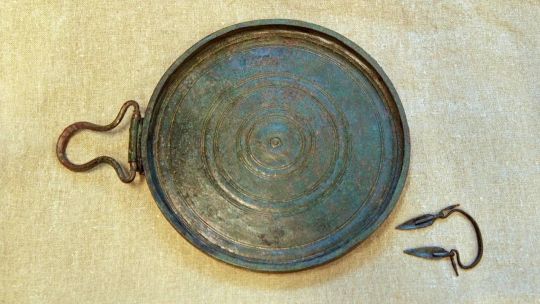
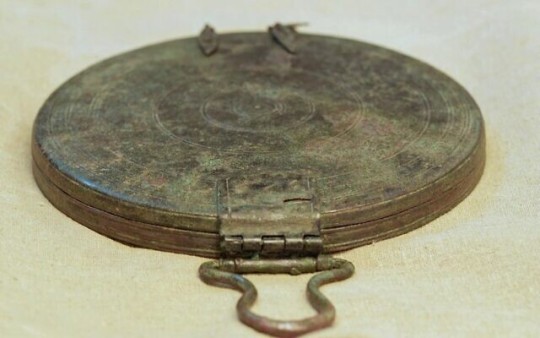

In the Middle East and eastern Mediterranean, the Hellenistic age refers to the period between the death of Alexander the Great in 323 BCE and the conquest of Egypt by Rome in 30 BCE. Stiebel said that he and his team believe the woman would have been among the first Greeks to arrive in the region.
Liat Oz, the director of the excavation on behalf of the IAA, described the mirror found in the tomb alongside the remains.
“This is only the second mirror of this type that has been discovered to date in Israel, and in total, only 63 mirrors of this type are known around the Hellenistic world,” she said in a news release about the discovery.
“The quality of the production of the mirror is so high that it was preserved in excellent condition, and it looked as if it was made yesterday.”
Folding box mirrors such as this were documented in tombs and temples in the Greco-Hellenistic world, the researchers noted. They were usually decorated with engravings or reliefs of idealized female figures or goddesses.

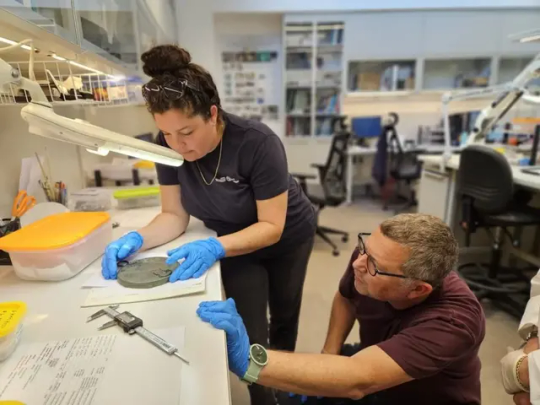
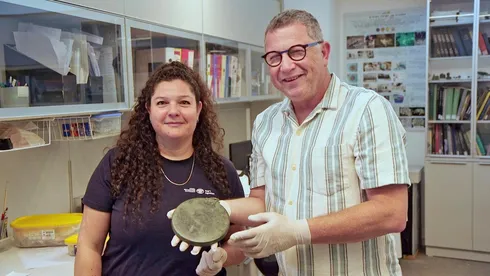
Stiebel said a woman of high status might have received such a mirror as part of a dowry, but this was unlikely to have been the case in this instance as married women rarely left their homes in Greece.
Alternatively, he said, she might have been a courtesan, as they often received gifts from men. Likening the hetairai to Japanese geishas, Stiebel explained that the women were regarded as “muses.”
He said: “Women in society were breaking glass ceilings in very strict and male-oriented Greek society and we do know that they served not only as sexual escorts, but were similar to geishas and provided an element of culture. For that they were given gifts and part of the economy of gifts in Ancient Greece had to do with mirrors.”
The fact the remains were cremated also hinted at the woman’s origins, Stiebel said.
“Cremation is alien to this country and the religion,” he said, explaining that cremation is not only forbidden in Judaism but would not have been practiced by the Persian empire either, which occupied the region at that time.
“The tomb was found in the middle of nowhere, not near any village or farm or settlement, which suggests that she would have been connected with one of the military campaigns and dated to the time of Alexandra the Great or slightly later.
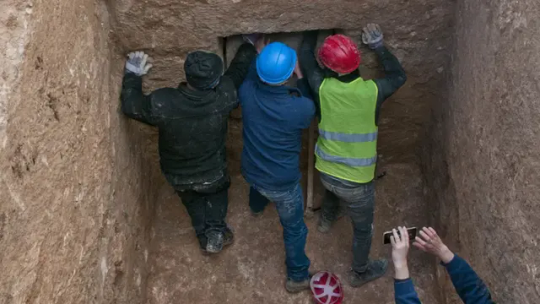


“We are suggesting that maybe she was with one of the generals.”
Stiebel went on to explain the significance of four iron nails found with the mirror and remains.
“Nails were used to protect the deceased and also to protect the living people from the dead. The bodies were literally nailed down to ensure they will not come back to the world of the living,” he said.
Stiebel said that the team are continuing with further research in order to “zoom in” on the finer details of the mirror.
He said: “We hope to shed more light on the origin of the production of the art and maybe shed more light on the history of the owner of the mirror, the general who bought it or where she came from.”
The research will be presented for the first time at an Israeli archaeology conference next month.
By Lianne Kolirin.
#Rare Bronze Mirror Found in 2300-Year-Old Grave of Greek Courtesan in Jerusalem#Ancient Greek courtesan#Kibbutz Ramat Rachel#ancient tomb#ancient grave#ancient artifacts#archeology#archeolgst#history#history news#ancient history#ancient culture#ancient civilizations#hellenistic period#persian empire#greek history
80 notes
·
View notes
Text
#fox news#wall streeet journal#ancient civilizations#sky news#my journal#historical#journal#historic architecture#asian history#iran news#cnn news#bbc news world#persian#historic#washington post#latest news#journaling
1 note
·
View note
Text
Rambling 241: The Forest of Shadows
What connects us to the Shadow Realm so deeply? Why do the Mayans continue to reveal deeper and deeper roots associated with the Egyptians? And how do the Sea People have such massive advancements on even the most technological of civilizations? Trying to find any information on the Shadow Realm after consistent data shows ancient research teams contained Jinn and other Shadow Realm creatures as members, the duo are taken far back in time into the past of the Persians, back when they were still known as the Sumerians. What pops up in this research answers questions the duo didn’t even know they had, but leave new standing questions behind.
Sumerians
The Persians
Shamash
Judge for the Jinn
Ganzir
Cizin
Ix Chel the Prodigy
Inanna and the Fruit of Knowledge
El
The Forest of Shadows
The Bridge of Realms
Our Links:
Official Website -��https://greythoughts.info/podcast
Twitter - https://twitter.com/JustConvoPod
Facebook - https://facebook.com/justconvopod
Instagram - https://instagram.com/justconvopod
#The Shadow Realm#Shamash#Sumarians#Sea People#Persians#Earth Gods#Sun Gods#Research#Science#Advanced Civilization#Eloheim#El#God#Jehovah#Cizin
1 note
·
View note
Text
How Islam Saved Western Civilization
youtube
#islam#photography#youtube#islamic#muslims#allah#quran#prophet muhammad#history#world history#arabs#persian#persian empire#christianity#roman empire#byzantium#byzantine#spain#europe#western civilization#al andalus#andalucia#andalusia#iberia#portugal#library of alexandria#egypt#ancient egypt#ancient greece#china
1 note
·
View note